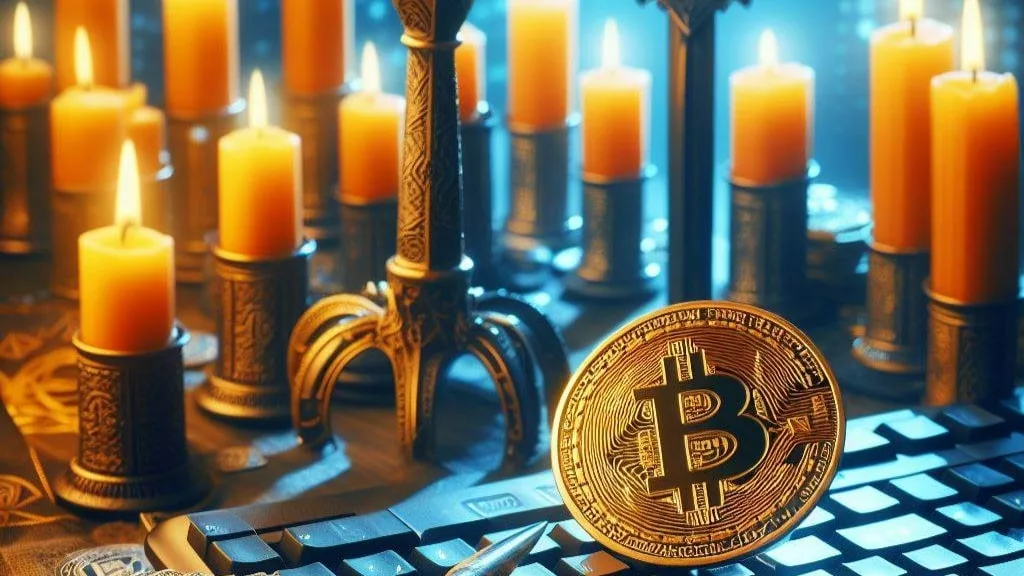
In the ever-evolving world of cryptocurrency, where each development seems to promise the next big breakthrough, Bitcoin enthusiasts are buzzing with anticipation over the recent activation of the Runes protocol. As Bitcoin undergoes its fourth halving, the introduction of this protocol has sparked a flurry of speculation and excitement within the crypto community.
But what exactly is Runes, and why are market watchers drawing parallels between it and the immensely successful Bitcoin Ordinals? Let’s delve into the details.
At its core, Runes represents Bitcoin’s foray into the realm of fungible tokens, akin to what ERC-20 tokens are for Ethereum. This means that Runes have the potential to facilitate a wide array of assets on the Bitcoin network, from meme coins to governance tokens, opening up new avenues for innovation and utility within the ecosystem.
The comparison to Bitcoin Ordinals, which saw explosive growth following its launch in December 2022, further fuels the optimism surrounding Runes. Developed by Casey Rodarmor, the same mind behind Ordinals, Runes has inherited a legacy of expectation and excitement. But can it live up to the hype?
Market analysts and enthusiasts alike are divided in their opinions. Some view Runes as a pivotal component of Bitcoin’s evolving landscape, poised to revitalize interest in the cryptocurrency and drive its value upwards. Others see it as part of a broader trend towards Bitcoin’s layer 2 solutions, positioning it to compete with established players like Ethereum and Solana in the decentralized finance (DeFi) sector.
Runes, often likened to Ethereum’s ERC-20 standard, introduces a new fungible token framework to the Bitcoin network. This means that a myriad of assets, from meme coins to governance tokens, can now find their home within the Bitcoin ecosystem. The implications of this expansion are profound, as it opens the door to a multitude of decentralized applications (dApps) and financial instruments previously beyond Bitcoin’s reach.
The comparisons drawn between Runes and Ordinals are not unfounded. Bitcoin Ordinals, launched in December 2022, witnessed an explosive surge in both network activity and fees, underscoring its significant impact on the Bitcoin landscape. The brainchild behind both protocols, Casey Rodarmor, lends further credence to the parallels between the two, raising the question: Can Runes replicate the success of its predecessor?
Despite the optimism surrounding Runes, it is not immune to skepticism and pushback within the crypto community. Critics have raised concerns about potential network congestion and dismissively labeled Runes as “spam” akin to Ordinals and inscriptions. However, such dissent has done little to dampen the enthusiasm of market watchers, who foresee Runes revitalizing Bitcoin’s DeFi sector and positioning it as a formidable contender against Ethereum and Solana.
Franklin Templeton, a prominent asset manager with assets totaling $1.5 trillion, expressed their anticipation for the potential impact of Runes on Bitcoin’s fungible token and DeFi market. This sentiment echoes the excitement that surrounded Bitcoin Ordinals and its transformative effect on the non-fungible token market.
However, it’s essential to acknowledge the challenges that Runes may encounter along the way. Like its predecessor, Bitcoin Ordinals, Runes may face resistance within the community, with some developers expressing concerns about its impact on the network. Despite this, the overall sentiment remains optimistic, with many believing that Runes has the potential to reshape Bitcoin’s ecosystem for the better.
Crypto-analysts such as Ansem advocate for holding Bitcoin altcoins like Runes, citing confidence in their potential to weather market fluctuations and contribute to a bullish trajectory. Meanwhile, proponents of Bitcoin’s layer 2 ecosystem, like Imran Khan of Alliance DAO, envision a future where Runes plays a central role in revolutionizing the DeFi sector and positioning Bitcoin as a formidable competitor to Ethereum and Solana.
As the crypto community eagerly awaits the unfolding of Runes’ journey post-halving, one thing is clear: the excitement and anticipation surrounding this new protocol underscore the ever-evolving nature of the cryptocurrency landscape. Whether Runes will emerge as the next game-changer for Bitcoin remains to be seen, but one thing is certain – its activation marks a significant milestone in the ongoing evolution of the world’s leading cryptocurrency.


Get the latest Crypto & Blockchain News in your inbox.